A trip to Anglesey was in our bucket list for a long time now – we would’ve visited sooner, but for Covid times! Anyway, whatever has to happen, will happen! That’s why on a fine July morning, we, along with other members of our lovely RSPB Liverpool group met at the South Stack RSPB reserve at Anglesey for our monthly bird walk. As always, our wonderful group leader Chris Tynan led us to what turned out to be an outstandingly amazing experience!
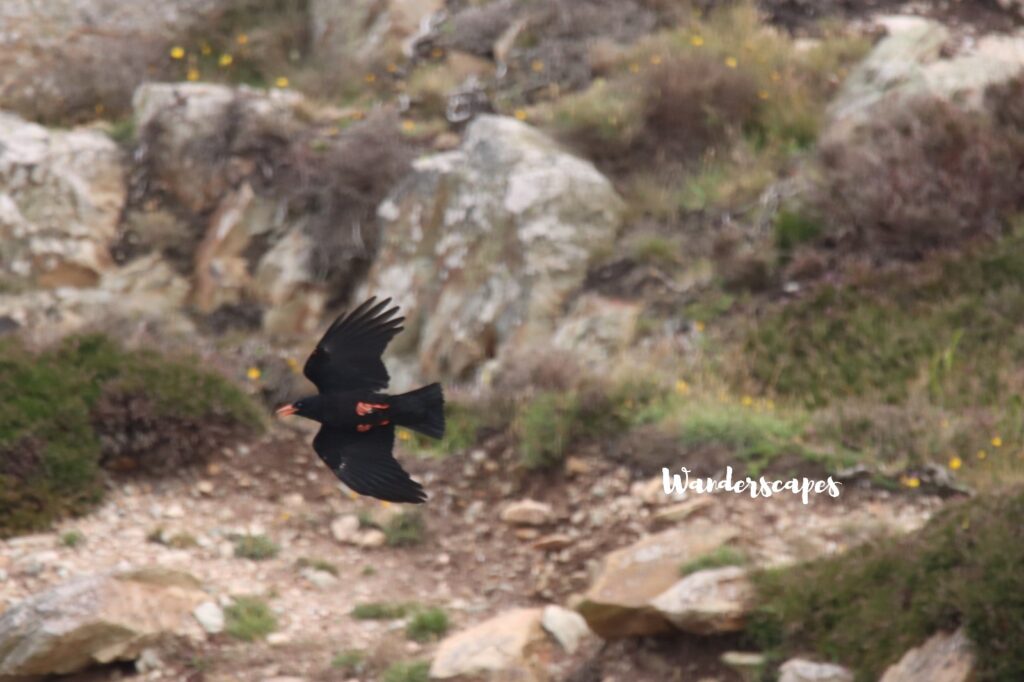
RSPB South Stack – Jewel of Anglesey
Interestingly (but not really surprising), recently we’d heard about South Stack from various people. Even a birder couple we bumped into at RSPB Burton Mere a week before our trip gave us raving reviews of the place and we literally couldn’t wait to get there! So, we were glad to be there, finally. One of the firsts to arrive, we layered up as while waiting for others to arrive. A chilly breeze with the Sun almost hidden behind a curtain of dark clouds made it a gloomy start to the day. However, a rather large group (of students, perhaps?) were already making their way down the steps towards the cliff sides.
At first glance, the South Stack reserve looked like any other seaside cliff. But as we settled in and listened for bird sounds, it began showing its hidden gems – some very vocal Whitethroats, Goldfinches, Blackbirds and other usual suspects. We stood peering into the sea and land alternatively while most of the group arrived and soon we were ready to go.
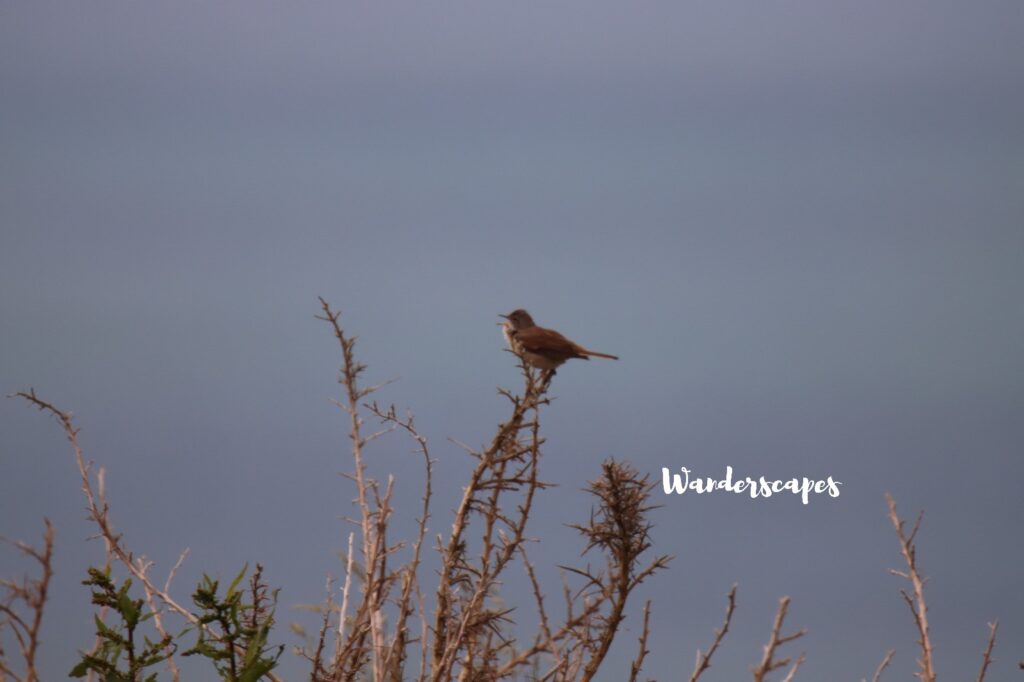

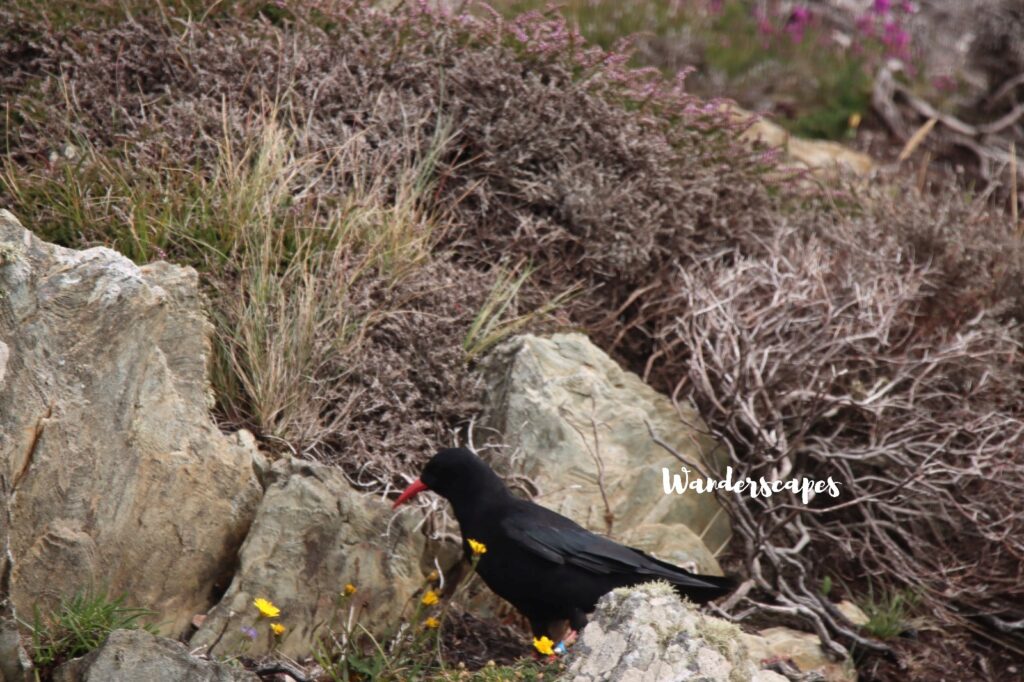

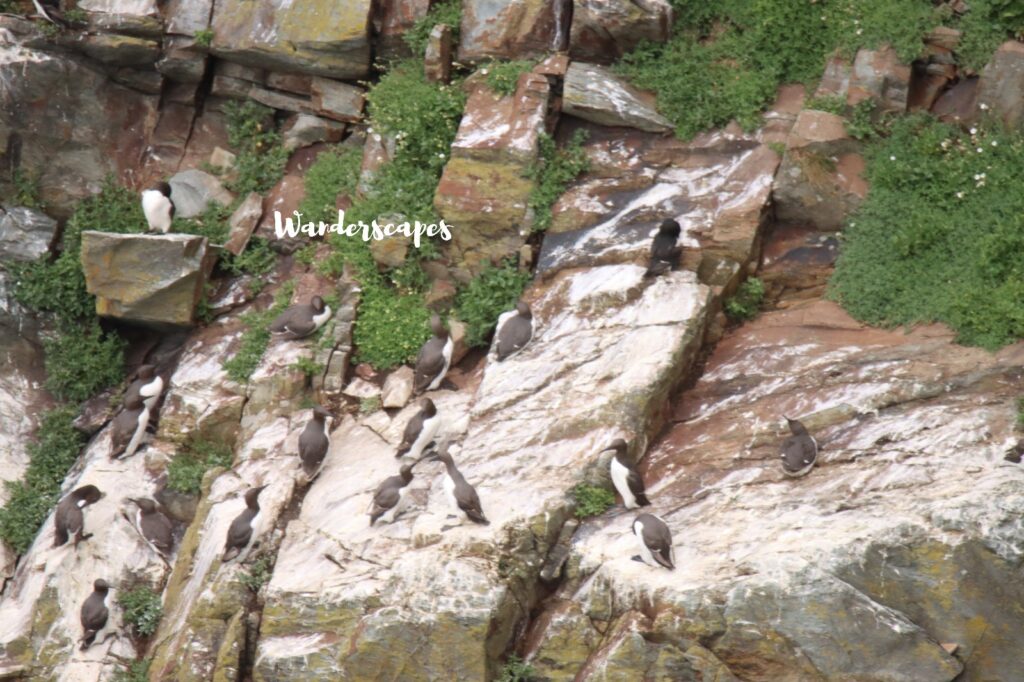
Off we went down the steps towards the cliff enjoying marvellous views and sounds of Whitethroats, Stonechat and Wren. As we approached the cliff side, the wind was getting stronger – so did our enthusiasm and excitement. We could see hundreds of Guillemots lined on the cliff sides even before we reached the edge. A closer look revealed several razor bills in their midst. Also seen were Kittiwakes and Fulmars. Chris explained the difference between the species and how to identify them from Herring gulls.
The Star Bird of Anglesey – Red-billed Choughs!
As we stood listening to Chris we heard a call above our heads. Looking up, we were amazed to see not one or two, but five Red-billed Choughs flying above us. They seemed untroubled by the strong westerly wind and were gliding in and out of the cliff side. Their red bills and feet were clearly visible even without binos and everyone excitedly followed their flight path until they disappeared behind one of the cliff sides. They looked absolutely marvellous!!!
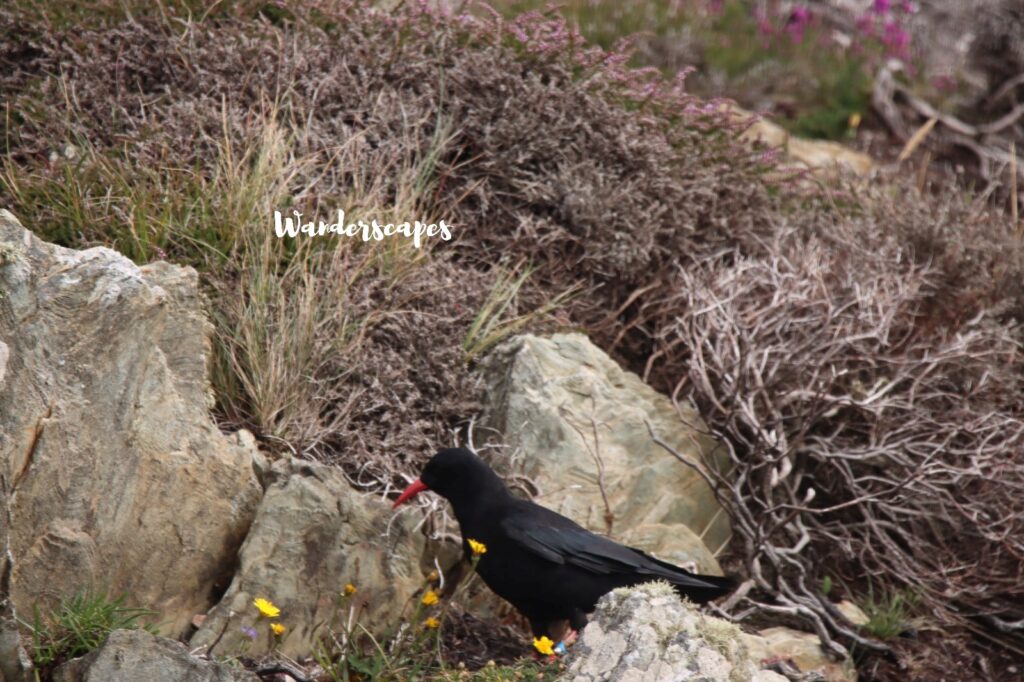

‘Puffin in the water!’, shouted someone in the group, sending a wave of excited anticipation among all. But, locating a tiny bird constantly moving along with the waves without any definite pointers is not an easy job. Even the expert birders in the group had to scan the waters thoroughly before zooming in on the bird. However, when we finally zoomed in on it, to our delight, there was another one and then a little afterwards, we saw two more! Four tiny puffins enjoying the rhythm of the waves was a lovely sight – to say the least!
Anglesey – A Coastal Birding Paradise
As more eyes peered into the sea – some scanning closer to the coast looking at the Guillemots, Razorbills and Puffins, others spotted Gannets and even Manx Shearwaters. We strained our eyes, peering eagerly through the binoculars as we scanned the sealine and finally managed to get a fleeting glimpse of the Shearwater! A small bird with a white belly and almost straight looking long wings, these birds are difficult to spot from coast while at flight. However, with experts like Chris in the group to point out in the right direction, even amateurs like us can see rare birds.
Soon the Choughs returned – this time with an even more closer and longer display. A couple of them landed on a cliff just across and gave us an opportunity to observe them clearly. The curved red bills stood out and so did the feet. They reminded us of the time we saw their Indian cousins – the Yellow-billed Choughs (Alpine Chough) – at the mighty Himalayan foothills years ago. The Red-billed Choughs entertained to our hearts content before we decided it was time to move on.
Although there are more spots to explore in South Stack, we had other plans for the day. We stopped at the café for refreshments and rest. Chris spotted some unusual bird behaviour in the sea where gulls and other birds had congregated at a spot, and he suspected there was a whale or similar animal underneath. Although we all scanned the scene excitedly with expectation, nothing came off it and soon the surface returned to normal. It was a cue for us to head to the next location.
From Anglesey’s Cliffs to Holyhead Harbour
We all headed to Holyhead Harbour to see Black Guillemots. These sea birds were sighted there recently and we all drove to the location shared by Chris. Some of the group members knew the place as they had been there before. However, for us, it was a new location, which we reached a bit later than others due to our sat-nav rerouting us through a longer route due to some roadworks en-route.
As we drove through a deserted road debating whether we are in the right place, we spotted some of the familiar faces farther ahead of us. Buoyed by the knowledge that we are at the right place, we parked the car and joined the group already looking out eagerly into the waters. It wasn’t long before someone in the group pointed out to a dark silhouette of a bird at the farther side. As we struggled to locate the bird through our binos, someone offered a peek through their scope and lo! there it was – a black bird with distinct white patch on the side and bright red legs.
Memories Galore
Interestingly, we had seen these beauties years before from Carrick-a-Rede in Northern Ireland. It was long before we joined the Liverpool RSPB group. However, the thrill of seeing the bird and recognising it (without having to google it) was a joy in itself. Also the fact that this sighting is with our fellow birders in the group made it special.
Soon we were treated to more numbers with two or three individuals flying across in front of us. It was amazing to track them through the bino as they flew in from the sea into the docks or flew out into the sea. A couple of them hung around in the water at the other side by the dock walls. It gave us ample time to observe them.
Turning Attention Towards Anglesey’s Terns
Once all of us had looked the birds to our heart’s content (well, almost, because you can never have enough of them), it was time to move to the next location – this time in the hope of seeing another rare beauty. We all headed to the Cemlyn Bay to see the tern colony there. Located at the north coast of Anglesey, the site is manged by North Wales wildlife trust and is a good place to see the terns up close.
A short half-an hour drive took us to Cemlyn Bay, where noisy, low flying terns greeted us. The place itself looked charming with waterbodies on the sides of the road leading to the car park. We could see the terns flying around even before arriving at the site. There were several Grey Herons, Mute Swans and other birds too.
Tern Colony – A fascinating Visual Treat!
A short walk from the car park took us to the beach side to the site of the tern colony. En-route we saw countless Sandwich Terns flying in and out of the sea, often their beaks loaded with fish. We also spotted Artic and Common Terns amongst them. It was useful to see them together and up-close to understand the differences. Soon we were able to identify and differentiate them effortlessly. The Artic Terns were on our wish list for a long time and to be able to see them at arm’s length and observe them fly overhead was a true dream come true moment!

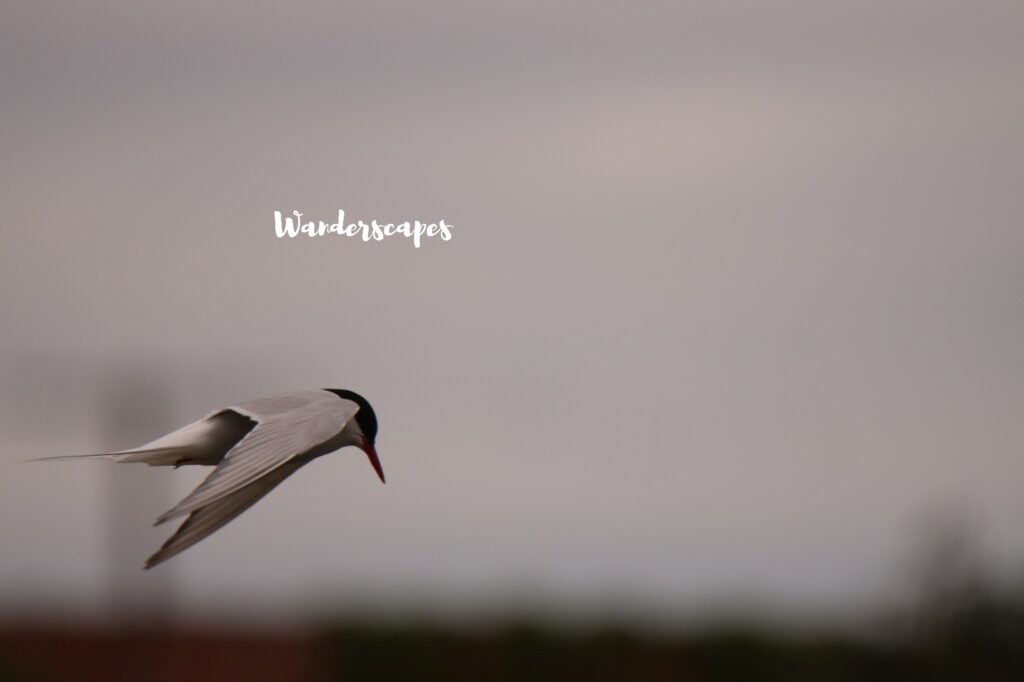
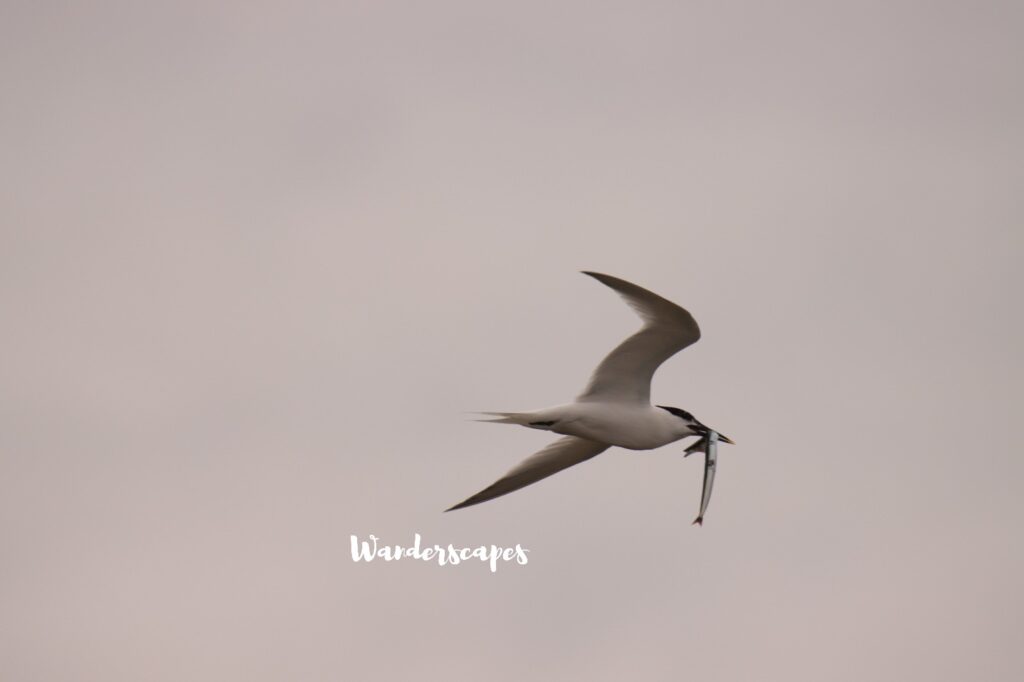
With bright red beak and black head, their long tail makes the Artic Terns easily recognisable. They are famous for their long migration. We watched the birds in awe for sometime. We challenged ourselves to identify them amongst the others – the Common Tern has a black tipped beak and does not have the long streamers. The Sandwich Tern with its yellow beak and black head with a funky hairstyle also was easy to identify. We stood watching them fly out of the colony into the sea and return with a catch. Everything was happening at eye level, and it made our experience even more special.

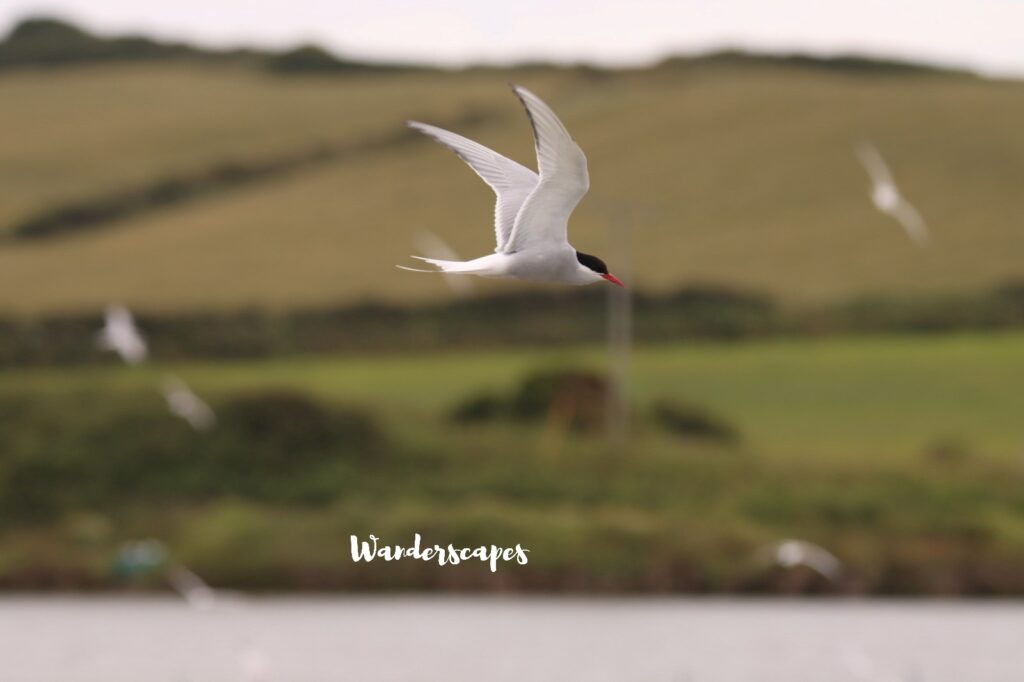
Roseate Terns – Can We Spot them?
As soon as we arrived at the beach, team leader Chris and a few other members of the group spoke to the team monitoring the tern colony to know about Roseate Tern. The gentleman confirmed that one individual was sighted that day. He pointed us towards the general area where it was spotted regularly. It has a nest somewhere at the other side of the colony, not easily seen from this side. Soon all eyes, scopes, binos and cameras were focussed towards the area – but with no Roseate Tern in sight. All we saw were Sandwich, Artic, and Common terns.
They had the company of Gulls (mainly Black-headed gulls), Oystercatcher, Egret and so on. After staring for what seemed like an eternity towards the colony, some of us turned back to the sea to watch the terns in action. A few were sat on the muddy seabed and someone spotted a Kittiwake amongst them. A Merganser flew into the sea in a hurry, few Cormorants flew across, while the terns dipped in and out of the colony inches above our head. We sat/stood observing everything; there was no sign of the Roseate Tern.
Parting Gift
After spending a considerable time trying to locate the bird, Chris decided to call it a day. We all agreed and prepared to walk back to the car park. However, someone shouted (Norman, we think) ‘Roseate Tern!’ and we turned towards the colony to see an individual bird with a light rose belly and fish in its beak trying to land amongst the crowded colony. A slight commotion followed – with other birds trying to steal the fish from its beak and humans trying to steal a good look before the bird disappeared from view!
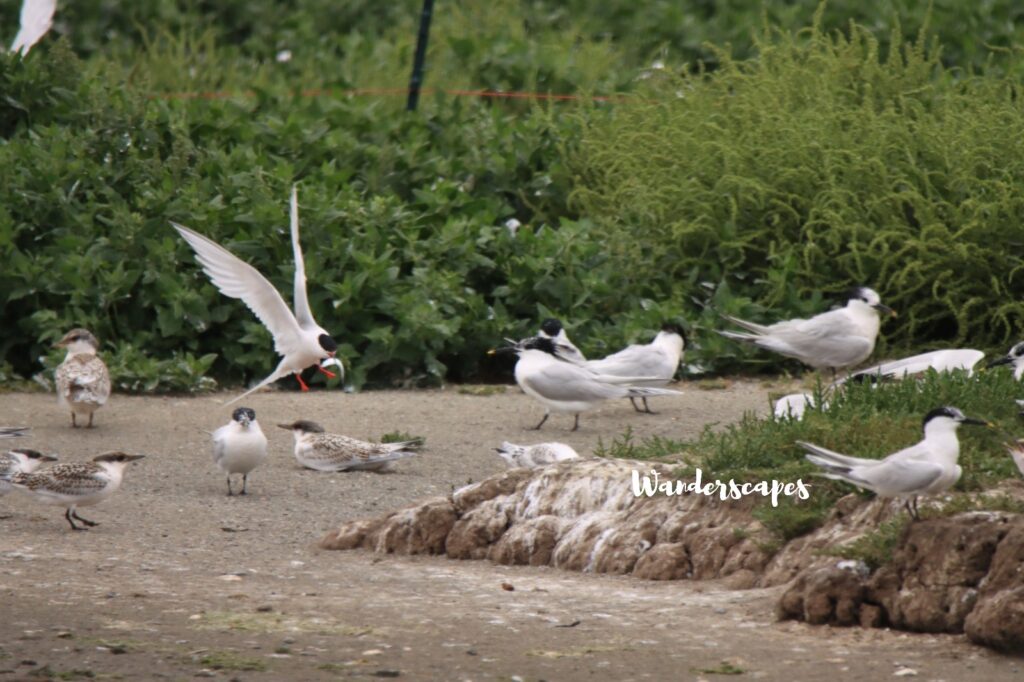
Thankfully we could follow the bird for a few more seconds as it landed at one spot, moved to another, and then slowly made its way into the middle of the colony. We clicked as many pictures as we could, at times not stopping to check but trusting our instinct that the bird would have been captured decently in a few shots at least! Soon, the bird disappeared from our view. We showed the Christ and team monitoring the site the pictures we clicked to make sure we’ve got the right bird and they confirmed the id, leaving us ecstatic!

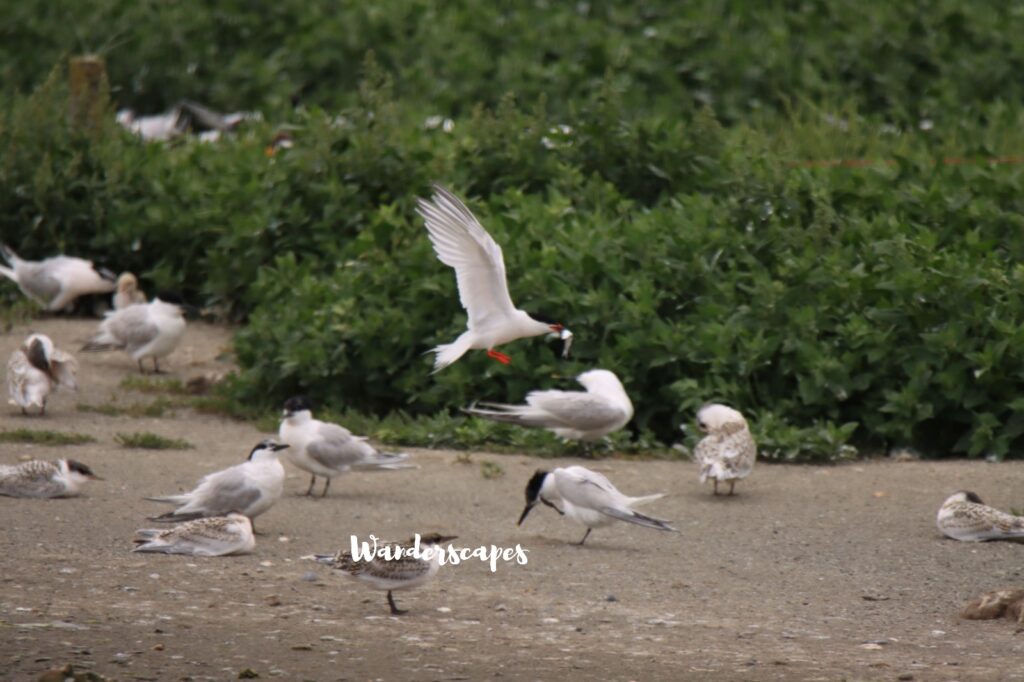
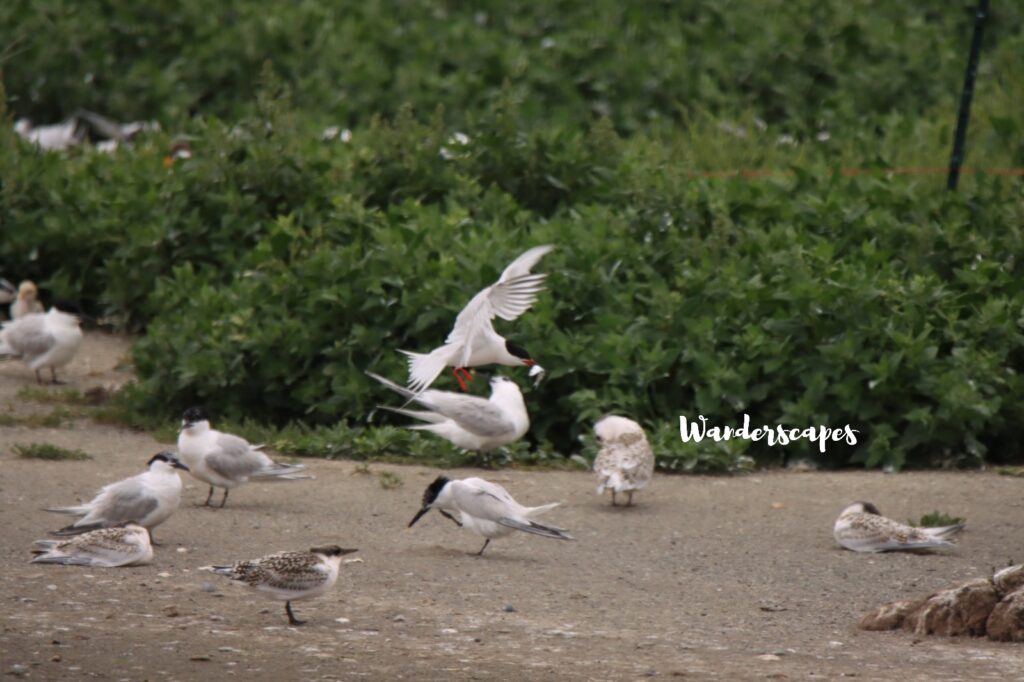
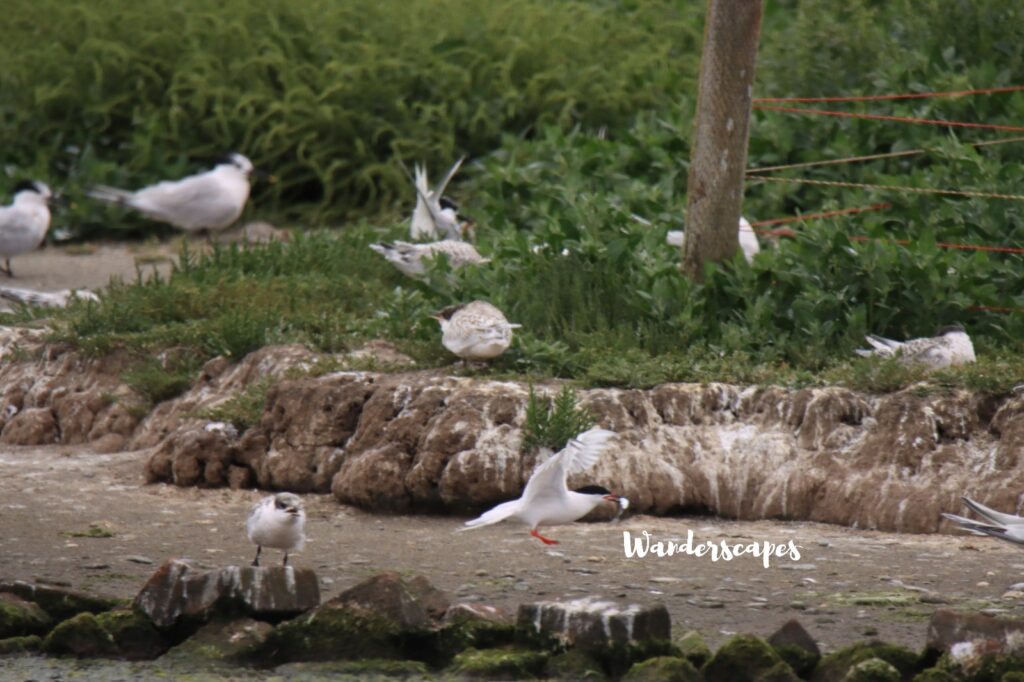
Chirs was beaming with joy too – he always does his absolute best to ensure everyone in the group see the birds properly and the sighting of Roseate Tern was another feather in his cap. We couldn’t have asked for a better leader and guide! It would leave a huge vacuum when he finally hangs his boots as the leader of this group later this year. But, that’s for later. Let’s not get into that now.
A Memorable Day
And thus ended our monthly walk – we couldn’t have planned for a better outing! It was a smashing day on all accounts. We saw all our special birds, had a great time with the team (as always) and managed to get some good pictures too. We wouldn’t trade it for anything else! These monthly bird walks are our dopamine dose as well as our health and wellbeing support. It’s highly recommended.
Check out our other posts if you would like to read more stories like this.
